Click here to return to the main conference page.
| 1. Michael CAVAYERO 柯偉業 (Peking University)  |
Michael Cavayero is currently a Postdoctoral and Research Fellow at Peking University’s Department of South Asian Studies and Research Center for Buddhist Texts and Art (北京大學佛教典籍與藝術研究中心). He is also an Adjunct Professor of the International College of the China Academy of Art (中國美術學院). Born and raised in New York, NY, Cavayero has lived in China since 2011. His research focuses on the relationship between Buddhism’s dissemination and the early textual history of Chinese painting. Before living in China, he received a B.F.A. from N.Y.U. as part of the University Scholars’ Program under a full-tuition scholarship. Following this, he lived in Kyoto, Japan, under a Freeman-Asia Fulbright scholarship to pursue research at Kyoto-Seika University. Cavayero’s Master’s and Ph.D. degrees were both completed in Mainland China, at the China Academy of Art, in Hangzhou, under an inaugural grant from the “10,000 Bridge-Scholarships” program initiated by the Obama Administration and the Chinese Government. His Ph.D. research focused on the Buddhist origins of key terms found in the Tang dynasty text on painting, Lidai minghua ji《歷代名畫記》. His dissertation titled, “Buddhist Origins of the Terms Xinyuan and Miaowu in Lidai Minghua Ji (Records of Famous Paintings of Successive Dynasties)” [《〈歷代名畫記〉中“心源”與“妙悟”佛教源流研究》] received the 2020 Outstanding Dissertation Award from the China Academy of Art and Zhejiang Province. Cavayero has published articles and translations in Xin meishu [New Arts], the Journal of the Oxford Center for Buddhist Studies, and has contributed to translation projects and publications published by Brill, the Shanghai and Suzhou Museums, the Vatican, Peking University and UNESCO among others. 北京大學外國語學院國際交流引進項目博士後、北京大學佛教典籍與藝術研究中心研究員,主要研究方向爲佛教與中國早期畫論文獻的互動關係、中印古代畫史互動的歷史與語言。在中國美術學院取得博士學位,博士畢業論文《〈歷代名畫記〉中“心源”與“妙悟”佛教源流研究》獲中國美術學院及浙江省2020年優秀博士論文獎。2019年入選由芝加哥大學與蓋蒂(Getty)基金會合辦的美術史研習項目及牛津大學佛教與美術精英項目。 |
| 2. Huaiyu CHEN 陳懷宇 (Arizona State University) 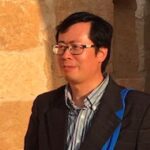 |
Huaiyu Chen (Ph.D., Princeton University) is Associate Professor of School of Historical, Philosophical and Religious Studies at Arizona State University. He has numerous publications on medieval Chinese religious and cultural history, the Silk Road Studies, and modern Chinese intellectual history. He has held fellowships from Institute for Advanced Study in Princeton, Clare Hall of Cambridge University, and the Max Planck Institute for the History of Science in Berlin (MPIWG). |
| 3. HAMADA Tamami 濱田瑞美 (Yokohama University of Art and Design 橫浜美術大學)  |
Tamami Hamada, Ph.D., is Associate Professor at Yokohama University of Art and Design in Japan. She obtained her Ph.D. in 2007 at Waseda University, Faculty of Letters, Arts and Sciences, History of Art. Her research focuses on Buddhist art history in East Asia, particularly in China from the 7th to 12th centuries. Hamada’s monograph, Chugoku Sekkutsu Bijutsu no Kenkyu 中国石窟美術の研究 (Study of Buddhist Cave Art in China),(Tokyo: Chuo Koron Bijutsu Shuppan 中央公論美術出版, 2012) examines the sources of Buddhist iconography in wall paintings and sculptures in Buddhist caves and cliff images in areas including Dunhuang, Kizil, Sichuan and Longmen, and explores the meaning of these works in religious cave spaces. It also attempts to provide an explanation for there being a vast number of Buddhist cave temples in China. Hamada has discussed topics such as: Preaching Buddha, Buddha of Traikālya, Buddha commissioned by the Indian King Udayana, Amitābha, Vimalakīrti scene, Bhaiṣajyaguru scene, Esoteric Buddhist art works, Thousand Armed Avalokiteśvara, etc. |
| 4. HE Liqun 何利群 (Research Institute of Archaeology at the Chinese academy of Social Sciences 中國社會科學院考古研究所) 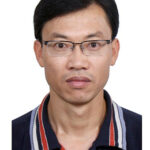 |
海德堡大學哲學博士。 1993~1998年任職新疆龜茲石窟研究所,2001年7月中國社會科學院考古研究所工作。現任中國社會科學院考古研究所河北工作隊副隊長,副研究員,社科院研究生院碩士導師,創新工程首席研究員,中國考古學會宗教考古專業委員會秘書長。歷任美國代頓自然歷史博物館、德國海德堡大學、海德堡科學院訪問學者,日本東北學院大學、香港珠海學院客座教授。主要論著有「鄴城北吳莊出土佛教造像」、「東亞地區早期佛教寺院佈局的主要類型及其演變」、「北朝至隋唐時期佛教寺院的考古學研究—以塔、殿、院關係的演變為中心」、「從北吳莊佛像埋藏坑論鄴城造像的發展階段與“鄴城模式”」、「鄴城遺址出土北魏譚副造像圖像考釋」、「Buddhist State Monasteries in Early Medieval China and their Impact on East Asia」等。 |
| 5. HUANG Bing 黃冰 (Providence College)  |
Bing Huang is an assistant professor of art history at Providence College. She obtained her Ph.D. from Harvard University and her MPhil from the University of Cambridge. She specializes in Chinese art, and her research interests include the artistic and cultural exchange between Europe and East Asia as well as the encoded relationship between the arts, sciences, and human consciousness. |
| 6. George A. KEYWORTH (University of Saskatchewan) 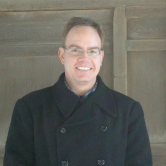 |
Dr. Keyworth received his B.A. (Honors) in Chinese and Asian Studies and M.A. in Asian Studies from the University of California, Santa Barbara (UCSB). He received his Ph.D. in Chinese Buddhist Studies from the University of California, Los Angeles (UCLA). Dr. Keyworth was an Assistant Professor of East Asian Religions at the University of Colorado at Boulder (CU-Boulder) from 2001-2006, followed by three years as a researcher in Kyoto, Japan, from 2006-2009. In 2011, Dr. Keyworth joined the Department of Religious Studies at the University of Saskatchewan in Canada as an Assistant Professor of Buddhist Studies and East Asian Religions. After receiving tenure in 2017, Dr. Keyworth transferred to the Department of History, where he will teach courses in the areas of premodern Chinese and Japanese history, Asian Studies, the history of religion in East Asia, and comparative manuscript studies.Dr. Keyworth has published several articles on topics ranging from Northern Song dynasty (960-1127) Chinese Chan Buddhism and the figure of Juefan Huihong 覺範惠洪 (1071-1128); Japanese pilgrims to Song China (e.g., Jōjin 成尋 [1011-1081]); apocryphal Chinese Buddhist scriptures and the particular case of the Shoulengyan jing 首楞嚴經 (*Śūraṃgama-sūtra, T no. 945) using Chinese and Khotanese Sanskrit sources from Dunhuang; esoteric Buddhism in Tang (618-907) and Song China; Zen Buddhism in Edo (1603-1868) Japan and the figures of Xinyue Xingchou 心越興儔 (Shin’etsu Kōchū, 1639-1696) and Kakumon Kantetsu 覚門貫徹 (d. 1730); and old Japanese manuscript Buddhist canons (issaikyō 一切経), especially from Nanatsudera 七寺 the Matsuo shrine 松尾社 canon kept at Myōrenji. He is currently working on two books, tentatively titled: Zen and the Literary Arts and Copying for the Kami: A Study and Catalog of the Matsuo Shrine Buddhist Canon. He has received grants from the Social Sciences and Humanities Research Council (SSHRC) of Canada to support his research projects. He has also supervised M.A. students who wrote theses on topics ranging from modern religion in China and Japan to early modern Daoism. |
| 7. Jeffrey KOTYK (University of British Columbia)  |
Jeffrey Kotyk is the Sheng Yen Education Foundation Postdoctoral Fellow in Chinese Buddhism. Jeffrey received his Ph.D. from Leiden University in 2017 with a dissertation titled “Buddhist Astrology and Astral Magic in the Tang Dynasty” . Earlier he received his M.A. in Buddhist Studies from Komazawa University in Tokyo, Japan in 2011, where he studied East Asian Buddhism. He received his B.A. in East Asian Studies from the University of Alberta in 2009. Jeffrey has published on the interaction between astronomy and Buddhism in China, such as “Iranian Elements in Late-Tang Buddhist Astrology” in Asia Major and “Yixing and Pseudo-Yixing: A Misunderstood Astronomer-Monk” in the Journal of Chinese Buddhist Studies. Recently he has researched the relationship between secular and Buddhist histories with a particular interest in evaluating the latter in light of the former. One resulting publication of this study was “Chinese State and Buddhist Historical Sources on Xuanzang: Historicity and the Daci’en si sanzang fashi zhuan” in T’oung Pao. His forthcoming monograph is titled Horoscopy and Astral Magic in Medieval China: Buddhist and Daoist Experiences of Astrology. At UBC he will be working on a project titled “State and Buddhist Accounts of South and Central Asia in Medieval China.” He is interested in comparative geography and ethnography between Buddhist and court authors in medieval China. Jeffrey is a member of the BDK Tripitaka Translation Project. He is contributing to translations, including the Madhyāntavibhāga-bhāṣya and Abhidharmakośā-bhāṣya. He has also contributed translations connected to the FROGBEAR Project. He also translated several of the late Master Sheng Yen’s works into English for Dharma Drum Mountain. |
| 8. LI Ling 李翎 (Research Institute for Daoism and Religions, University of Sichuan 四川大學道教與宗教文化研究所)  |
Li Ling is a Professor at Sichuan University in Chengdu China. She earned her Ph.D. from the Department of Art History at the Central Academy of Fine Arts in Beijing under the supervision of Professor Jin Weinuo. Her research focuses on art from the Han to the Tang, with a concentration on Tibetan Buddhist Art. From 2002, Li Ling worked at the National Museum of China before moving to Sichuan University in 2018. |
| 9. LI Xiaorong 李小榮 (Fujian Normal University 福建師範大學文學院)  |
籍貫江西寧都,1969年生,1986年8月中師畢業後參加工作。南開大學文學碩士(1996年),復旦大學文學博士(1999年),先後在浙江大學古籍研究所(2000-2001年)、福建師範大學文學院(2002-2005年)完成兩站博士後研究。現任福建師範大學文學院教授,兼任文學院院長、教育部人文社會科學重點研究基地福建師範大學閩台區域研究中心主任、中國語言文學博士後科研流動站負責人。主要學術領域為敦煌學、宗教文學、佛教文獻學,在《中國社會科學》《文學遺產》《敦煌研究》等刊物發表論文百馀篇,出版《敦煌佛教音樂文學研究》《晉唐佛教文學史》等專著15部,論著獲國家新聞出版總署圖書獎、教育部及福建省人民政府社會科學優秀成果獎12項。 |
| 10. LI Zhijun 李志軍 (Shaanxi Normal University 陝西師範大學) 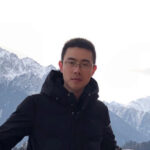 |
李志軍,1990年生,河南焦作人,陝西師範大學歷史文化學院博士研究生。主要從事敦煌石窟造像思想和義理研究,在《敦煌學輯刊》、《西夏學》、《南京藝術學院學報》(美術與設計版)等專業刊物發表學術論文數篇。參與2016年度國家社會科學基金重大項目「敦煌西夏石窟研究」(項目號:16ZDA116)。擔任陝西師範大學歷史文化學院、陝西曆史博物館、陝西師範大學人文社會科學高等研究院編、沙武田主編《絲綢之路研究集刊》(第5輯、第6輯)執行編輯。數次前往敦煌莫高窟、西千佛洞、瓜州榆林窟、東千佛洞等地考察,2018年前往新疆吐魯番地區,對柏孜克里克、七康湖、勝金口、吐峪溝、伯西哈石窟及阿斯塔納唐墓進行了考察。2020年則沿河西走廊自敦煌出發一路東行,赴玉門市考察了玉門博物館、昌馬石窟、騸馬城遺址、火燒溝文化遺址;隨後赴酒泉考察文殊山石窟、丁家閘魏晉墓和西溝唐墓;赴張掖考察了馬蹄寺石窟和大佛寺;赴武威考察了武威西夏博物館和武威市博物館。 |
| 11. Yicong LI 李怡淙 (Tsinghua University) |
Yicong Li is currently a first-year M.A. student of the Department of Art History, Tsinghua University. She received her B.A. (2020, Summa Cum Laude) in Art History from Tsinghua University with a dissertation on the post-Gandharan Buddha image in the mountainous area of Northern Pakistan. At present, she is interested in the visual cultural exchange between northwestern India and other religious societies of Asia in the Medieval Age. |
12. Weiyu LIN (UBC)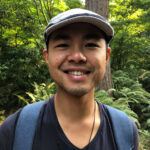 |
I am currently studying Fazang’s 法藏 (643-712) metaphysics and exegesis and I have recently provided an introduction and a partial translation of Fazang’s commentary on the Avataṃsaka Sūtra. I am also developing parallel interests in esoteric traditions in both Chinese and Tibetan Buddhism. I just finished my one-and-half year long exchange at the École pratique des hautes études (EPHE) in Paris, studying Dunhuang manuscripts and the Tibetan Six Yogas of Naropa. I also work as a translator for the Hualin Journal of Buddhist Studies. |
| 13. MI Defang 米德昉 (Academy of Dazu Rock Carvings 大足石刻研究院) 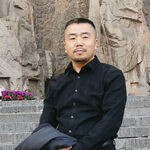 |
米德昉,男,甘肅永登人,中國民主同盟盟員,蘭州大學敦煌學研究所歷史學博士,研究館員,主要研究方向為石窟考古與藝術。現為大足石刻研究院研究中心主任,蘭州大學敦煌學研究所特聘教授,四川美術學院特聘研究員,中國敦煌吐魯番學會理事。目前出版專著1部,編著1部,撰寫研究報告3項,發表科研論文30餘篇,獨立主持並完成各類科研項目6項,在研國家社科基金項目1項,重慶市社科規劃重大項目1項。 |
| 14. Chunhui PENG (San Jose State University)  |
Chunhui Peng received her Ph.D. in literature from the University of California, San Diego in 2009. She is currently an assistant professor at San Jose State University. Her project deals with memory of traumatic historical events in China. |
| 15. SHA Wutian 沙武田 (Shaaxi Normal University 陝西師範大學) 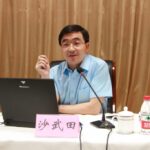 |
Sha Wutian is professor of School of history and civilization, Research Central for the Study of Silk Road History and Culture, Shaanxi Normal University, Research fellow of Dunhuang Academy. He also serves as an adjunct professor in the Northwest University of Nationalities, Northwest Normal University, and the Institute for Dunhuang Studies at Lanzhou University,Shaanxi History Museum. Doctor Sha graduated from Northwest University in July 1996 with a Bachalor degree in archaeology, then he pursued both his Master and Doctor degrees in the Institute for Dunhuang Studies at Lanzhou University from September 1999 to July 2005. Doctor Sha then worked as a postdoc in the history department of Lanzhou University from May 2006 to September 2008, and visited Tokyo University of the Arts as a visiting senior researcher from October 2008 to October 2009.Doctor Sha has published nine academic books, including 《敦煌畫稿研究》 (A Study on Rough Sketches from Dunhuang), 《吐蕃統治時期敦煌石窟研究》(A Study on the Dunhuang Caves under the Tubo Rule),《敦煌石窟藝術概論》(An Introduction to the Arts of Dunhuang Caves) , 《榆林窟第25窟:敦煌圖像中的唐蕃關係》Yulin cave 25:Relationship between Tang and Tobo in Dunhuang image,《歸義軍時期敦煌石窟考古研究》An Archaeological study of Dunhuang Caves during the period of Gui-yi-jun and etc. He has also published about 130 articles and conducted 18 research projects, including three projects funded by the National Social Science Foundation of China, a sub-project of National 973 Plan, and various projects funded by the Education Bureau of China, China Postdoc Science Foundation, Gansu Province Social Science Plan, and etc. He once won the first and third prizes of Excellent Achievements of Social Science in Gansu Province, National Award Nomination of One Hundred Excellent Dissertations, and Advanced Individual in Culture Heritage Preservation in Gansu Province.Doctor Sha mainly focuses on the caves of Dunhuang in the Tubo (Tibet) Period, Dunhuang caves Art under the influence of Sogdian,the archaeology of Dunhuang Caves and grotto arts, including grotto archaeology, iconology, history of Buddhist arts, and Dunhuang literature,the silk road history and civilization. |
| 16. Francesca TAROCCO 樂羽音 (Università Ca’ Foscari Venezia)  |
Francesca Tarocco is an associate professor of Buddhism and Chinese religions at Ca’ Foscari University of Venice and a visiting professor of Buddhist Cultures at New York University Shanghai. Her research deals primarily with the cultural history of modern Buddhism. This research led to the publication of The Cultural Practices of Modern Chinese Buddhism (Routledge, 2008) and of Altar Modern: Buddhism and Technology in Modern China (forthcoming). Her latest publications are “Luminous Remains: On Jewels, Relics and Glass in Chinese Buddhism” in Shiny: Jewels in Buddhist Imaginary and Materiality, (ed. Vanessa Sasson, University of Hawai’i Press) and “Charismatic Communications: The Intimate Public of Digital Chinese Buddhism” in Concepts and Methods for the Study of Chinese Religions III: Key Concepts in Practice (ed. S. Trevagnin and P. Katz, De Gruyter). She is an associate editor for China of the Oxford Research Encyclopedia of Buddhism. |
| 17. Barend TER HAAR (University of Hamburg)  |
Barend ter Haar teaches Chinese studies at the University of Hamburg, with a strong focus on cultural and religious history. Although first of all a social and cultural historian, the religious dimension is so central to Chinese traditional life that much of his research up to now has dealt with religious phenomena. In addition, he has worked extensively on issues of ethnic identity, violence and fear, and social organization. An important concern of his is to demonstrate that traditional culture and cultural patterns are still relevant today, as becomes visible for instance in the case of the Falun Gong or the ongoing role of exorcist violence in political contexts throughout the twentieth century. Amongst other things, he published a book on a lay Buddhist group called the Non-Action Teachings (late 16th century to the present), which came out in 2014 with Hawai‘i University Press as Practicing Scripture: A Lay Buddhist Movement in Late Imperial China. More recently he published Guan Yu: The Religious Afterlife of a Failed Hero in 2017 with Oxford University Press, and Religious Culture and Violence in Traditional China in 2019 with Cambridge University Press. He has just finished a monograph on Chinese fears and accusations of witches and witchcraft. |
| 18. Erika VÖRÖS (Eötvös Loránd University / SNU Kyujanggak International Center for Korean Studies, Seoul)  |
Erika Vörös is a Ph.D. candidate of the Department of Chinese Studies at Eötvös Loránd University (Hungary) and currently a junior fellow of the Kyujanggak International Center for Korean Studies at Seoul National University. After majoring in Buddhism, she received her master’s degrees in Korean Folklore (The Academy of Korean Studies) and Japanese Studies (Károli Gáspár University of the Reformed Church). Her research interests include mountain worship and maritime religion in East-Asia, with special emphasis on the interactions between Buddhism and indigenous religions as well as the relationship of sacred and profane. |
| 19. Beier WANG 王蓓兒 (University of Munich) 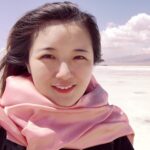 |
Beier Wang is a Ph.D. candidate from the University of Munich, specializing in Yogācāra Buddhism. She obtained her M.A. in Buddhist Studies from the University of Hong Kong and her B.Sc. in Psychology from the University of Toronto. Her current research investigates the Buddhist accounts of cognitive process and the saliency of “concepts” in shaping the perceptual world, based on the early to middle Yogācāra philosophy. |
| 20. WANG Jun 王珺 (China Jiliang University) 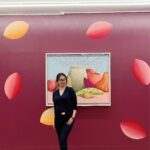 |
王珺,女,中國計量大學人文與外語學院講師。畢業於南開大學,獲文學博士,北京大學博士後。研究領域為佛教文化,唐代文學, 論文:《唐太宗的初唐思想與文學創作中的嘉遁情懷》,《天津大學學報(社會科學版)》,2020年05期, 《遼代薊州地區佛寺碑刻造像流布與信仰調查研究——以千像寺為中心》,《華林國際佛學學刊》,2020年04月, 《武周時期佛教文化交流與“沈宋”詩歌中的佛教意蘊》,第一作者,《天津師範大學學報(社會科學版)》,2020年02期, 《宗教視域下的初盛唐文化政策芻議》,《歷史教學》,2019年16期, 《來華景教徒與怛邏斯衝突之形成》,《歷史教學》,2017年07期, 《試論景教初傳時期的傳教策略及其影響——基於文化傳播的視角》,第一作者,《文學與文化》,2016年04期。
主要科研項目:負責“古絲路沿線法藏部遺存研究”中國博士後科學基金第66批面上資助項目, 參與國家社科基金重點項目“唐代長安佛教與絲綢之路”, 參與國家社科基金重大項目“印度古典梵語文藝學重要文獻翻譯與研究”。 編著:《國學講演錄》副主編,商務印書館,2020年5月。 |
| 21. WANG Xiang 王翔 ( Beijing Normal University-Hong Kong Baptist University & United International College) 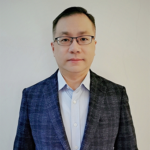 |
王翔博士(副教授)曾經負笈斯坦福大學宗教學系和耶魯大學東亞研究中心,現任北京師範大學-香港浸會大學聯合國際學院(UIC,北師港浸大)通識教育辦公室(GEO)主任並擔任北京師範大學(珠海)歷史文化研究中心(RCHC)的兼職研究員。其研究和教學方向為世界宗教、佛教研究、中外文化交流(特別是絲綢之路史)、靈性經典的譯註以及古代圖書館史等。王博士著有英文專書Ximing Monastery:History and Imagination in Medieval Chinese Buddhism(2015),並翻譯了歷史學家霍布斯鮑姆(Eric Hobsbawm)的著作《非凡的小人物:反抗、造反及爵士樂》( 2001)。王博士曾先後在Springer、《唐研究》、《國際漢學研究通訊》、《圖書館雜誌》、Journal for the Study of Chan Buddhism and Human Civilization以及《廣東佛教》等期刊發表了各類中英文文章、書評和書籍章節等數十篇,並獲批省市和國家級的各項研究基金十數種。目前王博士還擔任香港浸會大學饒宗頤國學院“Library of Sinology”叢書以及Brill 的期刊“Old World”的編委。他的最新研究計劃包括編纂漢語學界的第一部《世界宗教文選》(預計2022年出版)以及撰寫一部有關“絲路文化交流史中的佛教寫本圖書館”的專著(預計2023年出版) 。 |
| 22. WANG Xuemei 王雪梅 (Northwest University 西北大學) 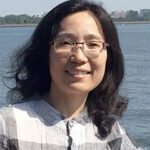 |
Wang Xuemei 王雪梅,歷史學博士,西北大學哲學學院、玄奘研究院教授,四川省第十三批有突出貢獻的優秀專家、陝西省千人計劃青年項目專家。主要從事佛教史及相關宗教文化研究,發表學術論文20余篇,出版專著《彌勒信仰研究》及合著《陝西神德寺塔出土文獻》。主持並完成多個國家級課題,目前在研國家社科基金一般項目「清代南部縣宗教與鄉土社會研究」(18BZS076)。 |
| 23. Yingxue WANG 王映雪 (Harvard University) 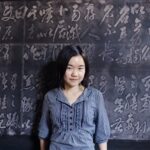 |
Yingxue Wang is currently a Ph.D. student in the Department of History of Art and Architecture at Harvard University. Her research examines early Buddhist material culture in seventh-century Japan by situating Japan in the inter-regional networks of social, technological, and ecological exchange in East Asia. The particular issues she has been investigating include the transmission of novel materials (such as aromatics and incense) and technologies (such as Chinese metallurgy and medicine); the role of nascent Buddhism in generating new ritual and sensory experiences in Japan; and the connections between Buddhist material culture and healing practices. Before her Ph.D., Yingxue completed her B.A. in Art History at Yale University, after which she studied at Harvard for her M.A. in Regional Studies: East Asia. |
| 24. Sara WILSON (University of Oklahoma)  |
Sara Wilson (she, her) specializes in twentieth century American literature and poetry and transpacific poetry and poetics, with interests in texts that arise from the interactions, translations, appropriations, and collaborations between “East” and “West,” American and Pacific cultures. In addition to teaching college writing seminars, she teaches courses on contemporary Asian American poetry and poetics, 20th century American poetry and poetics, and “mindfulness” as transpacific phenomena. She has taught at Mongolia International University, Beijing Normal University, and the University of Oklahoma, and currently teaches at American University and Northern Virginia Community College. |
| 25. XIE Yifeng 謝一峰 (Yuelu Academy at Hunan University 湖南大學岳麓書院) 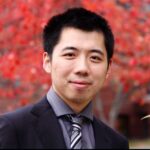 |
Xie Yifeng is an associate professor in Yuelu Academy, Hunan University. He got the B. A. from the historical culture college of Sichuan University in 2010 and graduated from the history department of Zhejiang University to get the M. A in 2012. In 2017, he got the Ph. D. from the National Institute for Advanced Humanistic Studies, supervised by Prof. Ge Zhaoguang, and his mainly academic concern is religion, art and history in Asia. From 2014 to 2016, he was the visiting fellow of Harvard Yenching Institute to cooperate with Prof. James Robson. In 2019, he became the visiting scholar of Chinese Art Media Lab, supported by CSC and to cooperate with Prof. Eugene Wang. On academic publications, he published more than twenty papers in Wenshi, Shilin, Dushu, Songshi Yanjiu Luncong, Tangshi Luncong, Zhongguo Shehui Lishi Pinglun, Hanxue Yanjiu, Ershiyi Shiji and Daojiao Yanjiu Xuebao etc.; and translated the essays collection of Prof. Stephen Bokenkamp with three other scholars in 2014. |
| 26. Caiyang XU 徐采揚 (Columbia University) 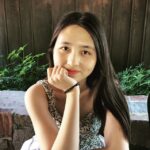 |
Caiyang Xu is an M.A. student in the Department of East Asian Languages and Cultures at Columbia University. Her research interest centers on the intersection of religion, power, and the negotiated making of time and space in Republican China. Particularly, a recent project traces how evolutionary thinking (e.g., linear temporality and the narrative of progression) impinges upon modern religiosity by uncovering the genealogy of religious categorization that was applied on diverse religious practices. Before joining Columbia, she majored in Religion and Math at Tufts University. |
| 27. YANG Xiaojun 楊效俊 (Shaanxi Museum of History 陝西曆史博物館) 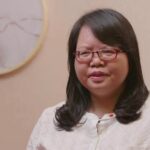 |
楊效俊,女,日本國神戶大學大學院文化學研究科社會文化論專業畢業,獲博士學位。現任陝西曆史博物館研究館員,主要從事漢唐考古及藝術史的研究、策展。主持完成中國博士後科學基金項目《佛教藝術與唐代文明》、國家社科基金項目《隋唐時期佛舍利崇拜制度研究》,出版專著《武周時期的佛教造型——以長安光宅寺七寶台的浮雕石佛群像為中心》,發表《東魏北齊墓葬的考古學研究》《隋唐舍利瘞埋制度的形成原因及特點》等論文三十餘篇。主持完成《絲路起點,燦爛文明——陝西文化遺產》《長安絲路東西風》《秦風頌廉——陝西廉政文物展》等原創展覽的策展。 |
| 28. ZHAN Ru 湛如 (Peking University 北京大學) 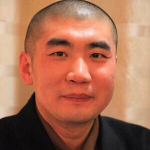 |
Zhan Ru is a Professor in Peking University’s School of Foreign Languages. Additionally, he is a vice president of the Buddhist Association of China and vice president of the Peking University Orientalism Research Institute. His areas of research include: Buddhist and Buddhist literature, the Indian Ministry of Buddhism, Dunhuang Buddhism, Buddhist system. |
| 29. ZHANG Ming 張銘 (Dunhuang Academy 敦煌研究院 & Peking University 北京大學)  |
張銘,1983年8月生,甘肅省平涼市莊浪縣人,博士研究生,副研究館員,敦煌研究院、北京大學考古文博學院聯合培養博士後。研究方向為石窟寺考古及佛教藝術。目前主要負責麥積山石窟考古報告樣稿及體例的編寫及麥積山石窟考古報告第一卷的編寫。主持在研國家社科基金項目一項,獲得中國博士後科學基金第67批面上資助,主持完成省級課題和中央高校課題各一項,作為主要成員參與教育部和國家社科項目4項。在《敦煌研究》、《敦煌學輯刊》、《中國文化遺產》、《中原文物》、《中國文物報》《大足學刊》等期刊雜誌上發表論文十餘篇。 |
| 30. ZHANG Xuesong 張雪松 (Renmin University of China 中國人民大學佛教與宗教學理論研究所)  |
張雪松,男,1980年生,北京人。2008年在香港中文大學文化及宗教研究系獲得博士學位。現為中國人民大學哲學院宗教學教研室副教授,碩士生導師,教育部人文社會科學重點研究基地佛教與宗教學理論研究所專職研究員,北京大學佛教研究中心兼職研究員;曾任中國人民大學哲學院宗教學教研室主任、宗教高等研究院院長助理等職。主要研究方向為佛教思想史、中國宗教史,先後在中國台灣和大陸地區出版學術專著四部:《法雨靈岩:中國佛教現代化歷史進程中的印光法師研究》、《唐前中國佛教史論稿》、《漢魏兩晉南北朝佛教史》(季羨林、湯一介主編“中華佛教史”第一卷)、《佛教“法緣宗族”研究:中國宗教組織模式探析》,譯著《天藍色的彼岸》等3部,在海內外發表論文多篇。曾在香港佛教雜志《溫暖人間》開設個人專欄;以“雨山”為筆名在《中國民族報·宗教周刊》開設專欄多年。
ZHANG Xuesong 张雪松 is currently an Associate Professor at School of Philosophy at the Renmin University of China. He obtained a B.A in Philosophy (2002) and a M.phil. in Religious Studies (2005) at Renmin University of China, and a Ph.D. in Religious Studies (2008) at The Chinese University of Hong Kong. His academic interest focuses on the history of Chinese Buddhism and Chinese local religion. His research mainly explores the organizations of Buddhist clergies and the interactions between Buddhism and local society in China. He has published four monographs, including A Study of Master Yin-guang in the Historical Progress of Modern Chinese Buddhism (2011), The History of Chinese Buddhism Before Tang Dynasty (2013), The History of Chinese Buddhism in Han, Wei, Jin, Southern and Northern Dynasties (2014), and Buddhist Dharma Lineage: the Model of Religious Organizations in China (2015). |
| 31. ZHAO Xiaoxing 趙曉星 (Dunhuang Academy 敦煌研究院) 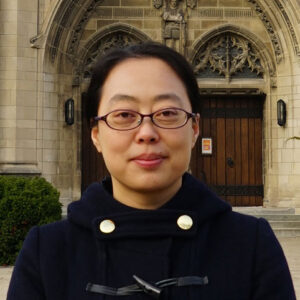 |
趙曉星,女,1980年出生,吉林省梅河口市人,2007年畢業於蘭州大學敦煌學研究所。 2007年進入敦煌研究院工作,現任敦煌文獻研究所副所長、研究館員,主要從事敦煌文獻與敦煌石窟研究。發表論文50餘篇,出版著作《莫高窟之外的敦煌石窟》《梵室殊嚴——敦煌莫高窟第361窟研究》《吐蕃統治時期敦煌密教研究》《沙漠中的美術館——敦煌莫高窟》等。主持完成國家社科基金西部項目“吐蕃統治敦煌時期的密教研究”等多項課題,現正主持教育部基地重大項目《敦煌西夏時期洞窟的分期與研究》。
Zhao Xiaoxing, was born in Meihekou city in Jilin Province on November 3rd 1980. She got her Ph.D. in History, graduated from Lanzhou University in 2007, and began to work in Dunhuang Academy. Now she is a professor and the deputy director of the Textual Research Institute of Dunhuang Academy. Mainly is engaged in the Dunhuang manuscripts and the Dunhuang Grottoes’ studies. She had published more than 50 articles, and 5 books: The Caves in Dunhuang Except Mogao Grottoes (2018), A Case Study of Cave 361 at the Mogao Grottoes in Dunghuang (2017), The Tantric Buddism in Dunhuang in Middle Tang Dynasty (2017), The Art Museum in the Desert(2015). She presided over the completion of several research projects, including The Tantric Buddism in Dunhuang in Middle Tang Dynasty by China National Social Science Fund, now takes charge of the Staging and Study of the Xixia Grottoes in Dunhuang by the Major research base projects of Chinese Ministry of Education. |
| 32. ZHENG Jiajia 鄭佳佳 (Zhejiang University of Finance & Economics 浙江財經大學) 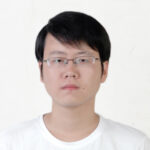 |
鄭佳佳,1986年生,安徽安慶人。2020年在中國人民大學宗教學系獲得博士學位。曾於2018年在英屬哥倫比亞大學短期訪學。2020年8月起進入浙江財經大學工作,主要從事中國唐宋佛教史研究。發表論文有《論佛日契嵩的孝道觀——以<輔教篇•孝論>為中心》《論契嵩禪宗譜系說對菩提達摩的考證》《唐代狂僧的教化行跡及其內涵——以<宋高僧傳>為主的探討》《佛教醫療、戒律與護教——論廬山慧遠對佛圖澄的超越》(待刊)等,翻譯論文《唐代的內道場》。參與國家社科基金重大項目《海外華人宗教文獻資料的收集、整理與研究》之子項目《海外華人佛教文獻資料部分》。
Zheng Jiajia was born in Anqing city of Anhui Province in 1986. He obtained a Ph.D. degree in Religious Studies from Renmin University of China in July 2020. He had a short-term academic visit at the University of British Columbia in 2018. He started to work at Zhejiang University of Finance & Economics in August 2020, mainly engaged in the historical studies of Tang-Song Buddhism. His published aricles include “On Fori Qisong’s Concept of Filial Piety: Focusing on the Fujiao pian” (2014), ‘Probing into the Textual Research of Qisong’s Theory of Zen Lineage on Bodhidharma’ (2017), ‘Crazy Monks’ Deeds of Indoctrination and Connotation in Tang Dynasty: Focusing on the Biographies of Song Eminent Monks’ (2017), ‘Buddhist Medical Treatment, Vinaya and Apologetics: On Lushan Huiyuan’s Surpassing of Buddhacinga’ (in press). He has also translated into Chinese academic articles, primarily ‘The Tang Buddhist Palace Chapels’ by Jinhua Chen (2019). He participated in a sub-project called Overseas Chinese Buddhist Documents and Materials belonging to the Major Project of China National Social Science Fund called Collection, sorting and research of overseas Chinese religious documents. |
